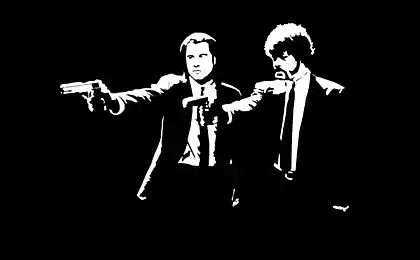992
Harmonica
Harmonica can be described as a compact handheld instrument that brings joy to millions of people around the world. At its core is a brass harmonica body Western model. Since its invention by Christian Friedrich Ludwig Bushman in 1821, the popularity of this tool has always grown. But after the appearance of the chromatic harmonica company «Hohner» repertoire that could carry on such instruments has grown considerably. However, not all fans harmonica know that the direct ancestor of their favorite instrument, as, indeed, and all other European reed instruments is oriental pipe organ. 
The western and eastern wind of classification authorities are reed instruments. However, if you open the "world encyclopedia of musical instruments", we learn that the reed is only one of the branches of the extensive family, who are united under the title "aerophones».
The main feature that defines the membership of this group is a vibration of air flow inside the case, which resulted in the birth and musical sound. This group includes instruments with holes (block flute) with a mouthpiece svistkovogo type (recorder), with a single reed (clarinets, saxophones), double reed (oboe, bassoon), a cup-shaped mouthpieces (pipes) as well as hand-reed (eastern and western pipe organ, concertina, accordion and harmonica).
For the first time the eastern pipe organ came to Europe from China in the middle of the 18th century. This tool is a 17 bamboo tubes of various sizes with copper tabs inside, which is mounted in a circle to the metal housing with a mouthpiece. After his study of the idea of using the tabs in the design of the traditional authorities. Unfortunately, such experiments have not received the approval of the general public, and the majority of organ masters refused such constructive decisions with respect to keyboards.
Either way, the tabs have been used in the manufacture of the western pipe organ only in the 19th century. The first harmonica was created by German watchmaker Christian Friedrich Ludwig Bushman in 1821. The invention, called "aura" is a metal plate with 15 slots, which closes the respective steel prongs. According to the authors of its creation it was more a tuning fork, not a musical instrument. Notes it were located in chromatic order and extracted only by exhalation.
In 1825, another German F. Hotz began production of wind at its factory in Knittlingene. Another German-born Christian Messner bought some made Bushman "auras" and in 1827 began to manufacture them like tools. His articles he called a strange word "mundeoliny." Two years later, the Englishman Sir Charles Wheatstone patented his model pipe organ. Its design tabs manage a small button keypad, which the author himself called the "sim-fonium."
But the author of the most important period of time for design decision was a master of Bohemia by the name of Richter. Around 1826, he made the harmonica sample with ten holes and twenty reeds (separate for inspiration and expiration), set in a wooden cedar housing. Richter proposed setting option using the diatonic scale has become the standard for the European instruments, which are called «Mundharmonika» or pipe organ.
In 1829 IV Glières organized the production of wind at its factory in the German town of Klingenthal. In 1855 he did the same another German, Christian Weiss. However, by 1857 the largest mass producer of accordions became firm of Trossingen. At the time, it led the famous Matthias Hohner. In 1857 alone, with the help of his family and a hired worker, he managed to release 650 instruments. Honer was a prominent businessman. One of its findings was the marketing name plate with manufacturer. In 1862 Hohner harmonica brought to North America. It was a move that eventually led his firm to world leadership in the production of these tools. By 1879 Honer He produced 700 thousand instruments per year. At the turn of the century the annual production had amounted to 5 million units. Now the company produces more than 90 different models of mouth organs that allow the artist to express themselves freely in any musical form, be it classical, jazz, blues, rock or ethnic music. There are statistics that the United States play on this instrument, 40 million people, and another 5 million in Canada.
I must say that the harmonica, or pipe organ in different languages have different names. In German it is called «Mundharmonika», in French - «harmonica a bouche», in Italian - «armonica a bocca», in Spanish «armonica», in English - «harmonica», «mouth organ», « French harp »or« harp ».
It is said that its name harmonica owes entirely different instrument. In 1829, the Viennese master Demian received exclusive rights to produce accordions. Naturally, other artists also produced similar tools, but under a different name, namely - «handharmonika» (handmade accordion). Due to the similar principle of action pipe organ became known as «mundharmonika» (harmonica).
The rapid spread of the accordion around the world could not prevent even the world wars. German manufacturers produced for different countries special export model: «1'Epatant» and «La Marseillaise» in France, «King George» and «Alliance Harp» England, «El Centenario» for Mexico and even an accordion on chains, for those ethnic groups in which there was no clothing pockets. During the 1st World War, various organizations have implemented accordions German and British soldiers. There was even a model of «Kaiser Wilhelm».
The first recording harmonica were made in the US in the early 20s, although a silent movie, this tool has been caught on tape in 1894.. In the 30 years of the Great Depression, and in the 40th - 2nd World War contributed to the displacement of southerners in the northern states and the west coast. This process has stimulated the spread of small tools across the vast territory of the United States. Then, among the black inhabitants of Chicago were very popular Jazz Gillum and John Lee "Sonny Boy" Williamson. At the same time on the other side of the world in Nuremberg Larry Adler played for the soldiers of the Allied armies on the anti-Hitler coalition. To locate factory «Hohner», he flew on a small plane, having as a reference only to the image of the box in which it was shown that building!
Everywhere soldiers were returning to their homes. The rise of the Negro ghetto felt that the course was reflected in the music. Young musicians from the south (Little Walter, Junior Wells, Snooky Pryor) is now playing the harmonica through a microphone and amplifier. It was something new - "misissippsky saxophone" (as in the American slang called harmonica) could now be the soloist accompanied by an orchestra. In the 50 years of rock and roll blew patriarchal silence of the then music scene. The accordion was at the forefront of youth rebellion, which drew inspiration from the black American blues.
This tool has experienced another birth of a new musical style, and to this day retains its popularity among artists of different ages and musical styles.

The western and eastern wind of classification authorities are reed instruments. However, if you open the "world encyclopedia of musical instruments", we learn that the reed is only one of the branches of the extensive family, who are united under the title "aerophones».
The main feature that defines the membership of this group is a vibration of air flow inside the case, which resulted in the birth and musical sound. This group includes instruments with holes (block flute) with a mouthpiece svistkovogo type (recorder), with a single reed (clarinets, saxophones), double reed (oboe, bassoon), a cup-shaped mouthpieces (pipes) as well as hand-reed (eastern and western pipe organ, concertina, accordion and harmonica).
For the first time the eastern pipe organ came to Europe from China in the middle of the 18th century. This tool is a 17 bamboo tubes of various sizes with copper tabs inside, which is mounted in a circle to the metal housing with a mouthpiece. After his study of the idea of using the tabs in the design of the traditional authorities. Unfortunately, such experiments have not received the approval of the general public, and the majority of organ masters refused such constructive decisions with respect to keyboards.
Either way, the tabs have been used in the manufacture of the western pipe organ only in the 19th century. The first harmonica was created by German watchmaker Christian Friedrich Ludwig Bushman in 1821. The invention, called "aura" is a metal plate with 15 slots, which closes the respective steel prongs. According to the authors of its creation it was more a tuning fork, not a musical instrument. Notes it were located in chromatic order and extracted only by exhalation.
In 1825, another German F. Hotz began production of wind at its factory in Knittlingene. Another German-born Christian Messner bought some made Bushman "auras" and in 1827 began to manufacture them like tools. His articles he called a strange word "mundeoliny." Two years later, the Englishman Sir Charles Wheatstone patented his model pipe organ. Its design tabs manage a small button keypad, which the author himself called the "sim-fonium."

But the author of the most important period of time for design decision was a master of Bohemia by the name of Richter. Around 1826, he made the harmonica sample with ten holes and twenty reeds (separate for inspiration and expiration), set in a wooden cedar housing. Richter proposed setting option using the diatonic scale has become the standard for the European instruments, which are called «Mundharmonika» or pipe organ.
In 1829 IV Glières organized the production of wind at its factory in the German town of Klingenthal. In 1855 he did the same another German, Christian Weiss. However, by 1857 the largest mass producer of accordions became firm of Trossingen. At the time, it led the famous Matthias Hohner. In 1857 alone, with the help of his family and a hired worker, he managed to release 650 instruments. Honer was a prominent businessman. One of its findings was the marketing name plate with manufacturer. In 1862 Hohner harmonica brought to North America. It was a move that eventually led his firm to world leadership in the production of these tools. By 1879 Honer He produced 700 thousand instruments per year. At the turn of the century the annual production had amounted to 5 million units. Now the company produces more than 90 different models of mouth organs that allow the artist to express themselves freely in any musical form, be it classical, jazz, blues, rock or ethnic music. There are statistics that the United States play on this instrument, 40 million people, and another 5 million in Canada.

I must say that the harmonica, or pipe organ in different languages have different names. In German it is called «Mundharmonika», in French - «harmonica a bouche», in Italian - «armonica a bocca», in Spanish «armonica», in English - «harmonica», «mouth organ», « French harp »or« harp ».
It is said that its name harmonica owes entirely different instrument. In 1829, the Viennese master Demian received exclusive rights to produce accordions. Naturally, other artists also produced similar tools, but under a different name, namely - «handharmonika» (handmade accordion). Due to the similar principle of action pipe organ became known as «mundharmonika» (harmonica).
The rapid spread of the accordion around the world could not prevent even the world wars. German manufacturers produced for different countries special export model: «1'Epatant» and «La Marseillaise» in France, «King George» and «Alliance Harp» England, «El Centenario» for Mexico and even an accordion on chains, for those ethnic groups in which there was no clothing pockets. During the 1st World War, various organizations have implemented accordions German and British soldiers. There was even a model of «Kaiser Wilhelm».
The first recording harmonica were made in the US in the early 20s, although a silent movie, this tool has been caught on tape in 1894.. In the 30 years of the Great Depression, and in the 40th - 2nd World War contributed to the displacement of southerners in the northern states and the west coast. This process has stimulated the spread of small tools across the vast territory of the United States. Then, among the black inhabitants of Chicago were very popular Jazz Gillum and John Lee "Sonny Boy" Williamson. At the same time on the other side of the world in Nuremberg Larry Adler played for the soldiers of the Allied armies on the anti-Hitler coalition. To locate factory «Hohner», he flew on a small plane, having as a reference only to the image of the box in which it was shown that building!
Everywhere soldiers were returning to their homes. The rise of the Negro ghetto felt that the course was reflected in the music. Young musicians from the south (Little Walter, Junior Wells, Snooky Pryor) is now playing the harmonica through a microphone and amplifier. It was something new - "misissippsky saxophone" (as in the American slang called harmonica) could now be the soloist accompanied by an orchestra. In the 50 years of rock and roll blew patriarchal silence of the then music scene. The accordion was at the forefront of youth rebellion, which drew inspiration from the black American blues.
This tool has experienced another birth of a new musical style, and to this day retains its popularity among artists of different ages and musical styles.






















